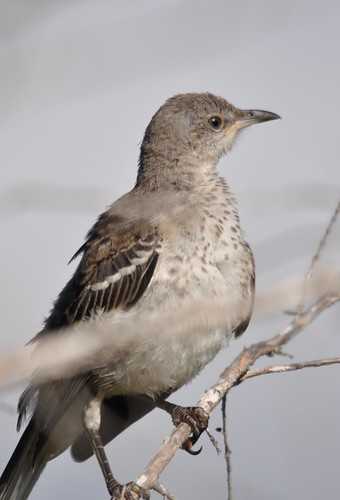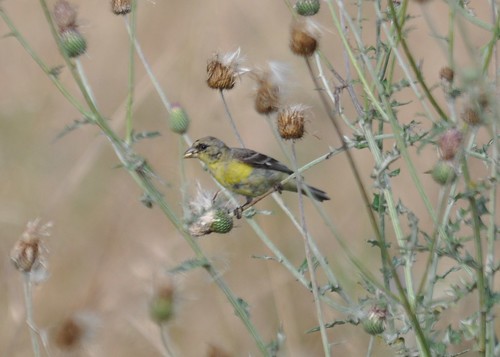One of the challenges in birding is identifying birds that have variations in coloring. Most of the time, birds either look like they are SUPPOSE to (pictures in a field guide)or look like they USUALLY do (those you see in backyard regularly). Most of the field guides do a pretty good job describing juvenile appearance, and often A juvenile bird resembles the female adult closely enough that identification is not a problem. Unfortunately, age is only one factor in variation of appearance. Birds feathers can also change by wear, fading, and staining. Some species come in different morphs, such as the white morph of the
Reddish Egret. Huh?! Other birds also show up with leucistic plumage in which patterns maybe recognized but colors appear washed out. And last but not least birds also molt once a year, the process in which they drop and grow an entirely new set of feathers. (Like getting a whole new wardrobe without having to go to the store and try anything on-WOW!) Each species molts at their own time, and never during breeding or migration when feathers are needed. Whew! Sorry. That was a long introduction to the fact that I saw quite a few birds yesterday with various variations.
There were at least 10
American Robins (Turdus Migratorius)in juvenile plumage. Most were on the ground, but a few like this guy popped-up into the tree. Robins are thrushes and can often be identified by breast color and pattern. As adults, American Robins have the more familiar red breast, but in the juvenile stage have the spotted breasts as in the picture.

Another abundant bird yesterday was the State bird of Texas, the
Northern Mockingbird (Mimus Polyglottos). Let's also go by numbers and call this the BOTD as I'm sure I saw at least 20 or more of these guys. The one pictured below, like the Robin, is marked as a juvenile by the spots on the chest.

Finally, a number of
Lesser Goldfinches were also in the area. Many of these were in different stages of either molting or development. In previous posts I have pictured adult lesser Goldfinches and described the color variations between those in Texas and elsewhere. The following pictures show even more of the variation that can exist within this species depending on the day you see them.









No comments:
Post a Comment